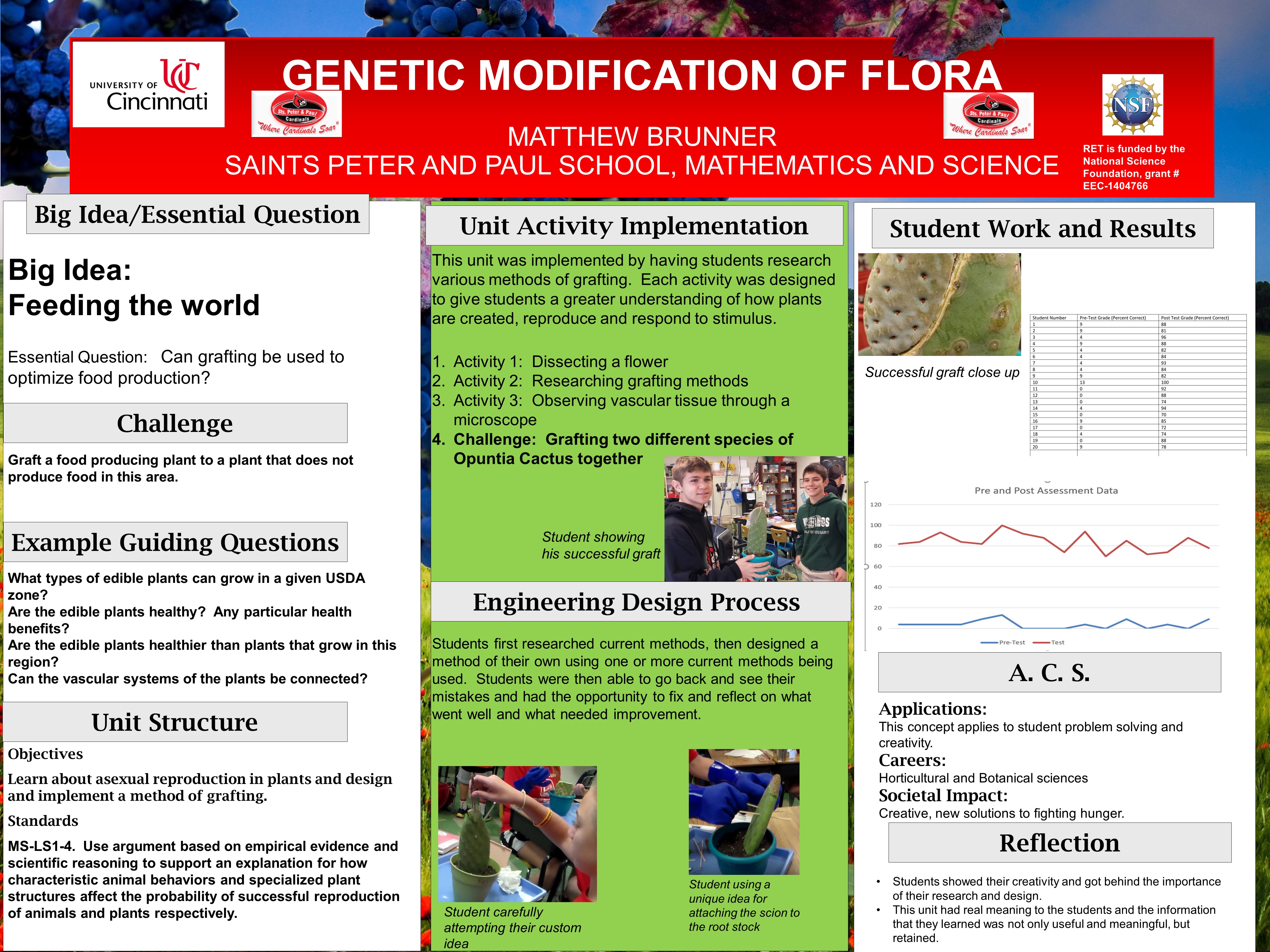Research Experience for Teachers (2016-2017)
Botanical and Horticultural Sciences
 |
||||||
|
||||||
|
Pre/Post Test: Pre-Test N/A Post-Test N/A |
||||||
Keywords:
|
|
The Big Idea (including global relevance) Feeding the world. World hunger is something that affects everyone and is not likely to go away anytime soon. Creating plants that provide food and can survive in different zones would be very helpful for people who live in different areas. |
|
Essential Questions Can different species of cactus be grafted other cactus within the same genus? |
|
The Hook A breakfast including a variety of fruits that students don’t normally eat, such as cactus fruit. This should allow for curiosity about the fruit, where it comes from and what it tastes like. The hook allows for several senses to be utilized and for natural questions to be asked. |
|
The Challenge Successfully connect the vascular systems of one species of Opuntia cactus onto another species of Opuntia cactus. (Grafting) |
|
Guiding Questions
|
ACS (Real world applications; career connections; societal impact)
World hunger is something that affects everyone and is not likely to go away anytime soon. Creating plants that provide food and can survive in different zones would be very helpful for people who live in different areas.
This challenge based learning unit helps to address the concept of providing food to the hungry. It uses techniques that are not normally considered which helps students think outside the box to solve a problem.
General engineering will be covered by guest speaker Eugene Rutz. Specific jobs will be covered via power point.
Misconceptions
- The plants will "root" into the other plant.
- The plant scion will become the same plant as the host.
Unit Lessons and Activities
- Lesson 1: Plant Adaptations and Human Influence (4 Days)
Lesson 1 will focus on giving students an understanding of plant morphology. Students will observe different structures within plants that allow homeostasis.- Activity 1: Introduction of the Big Idea, Generating the Essential Question, Challenge and Guiding Questions – 2 Days
- Activity 2: Plant dissection – 2 Days
- Lesson 2: Designing the Challenge (5 Days)
Lesson 2 enables students to research different methods of plant propagation. Students will be looking into seed, cutting and grafting propagation techniques. They will also be examining the use of hormones such as Indole butyric acid, Auxin, and Gibberellin.- Activity 3: Methods for Plant Propagation, Explore different Methods of Propagation. Identify and Define, Gather Information, Identify Alternatives, Select Solutions will be done on these days. – 3 Days
- Activity 4: Cactus Grafting, planning and grafting Opuntia cactus. – 2 Days
- Evidence of CBL: Lesson 2, Activity 4
- Evidence of EDP: Lesson 2, Activity 3 and Activity 4
Additional Resources
